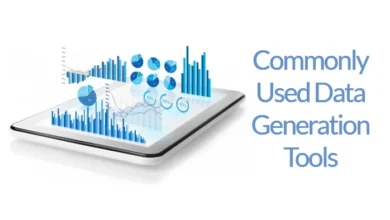Mastering The Data Pipeline: Tools For Seamless And Reliable Data Integration

Data integration can be challenging with various information sets coming from different sources, being structured differently, and having diverse formats.
Building a reliable pipeline is essential to ensure accurate transfer within and beyond an organization. Building a pipeline entails fitting together different technologies and tools into a cohesive unit that transfers and processes information quickly and efficiently.
One essential tool for successful integration is data pipeline monitoring tools. In this article, we’ll look at tips and tools to help you assemble a data pipeline that allows for seamless and reliable data integration.
Use Integration Tools
One useful testing tool for data integration is an integration platform as a service (iPaaS). This tool simplifies transferring information between an organization’s different applications, whether in the cloud or on-premises.
iPaaS platforms feature visual integration tools that allow users to connect various applications and sources.
An iPaaS provides a graphical interface that easily displays connections, reducing the time spent on coding.
Besides, it automates data mapping, error handling, and other tasks that would traditionally be the responsibility of developers.
Managing Sources
In a data pipeline, it is necessary to manage sources well. Organizations’ information comes from different sources, and each source can have different data types. Failure to consider these differences can lead to quality issues, loss of assets, poor decision-making, and other related issues.
The importance of pipeline monitoring cannot be overstated. With the right management tools and techniques, organizations can ensure consistent quality and maximize return on investment.
Quality Control
One crucial aspect of data pipeline building is quality control. Organizations must prioritize implementing robust strategies to ensure their information is accurate, complete, and relevant.
This involves thorough data cleansing processes, such as identifying and removing duplicated or unnecessary information. Furthermore, verifying that all data entries have the required fields filled in correctly is crucial, leaving no room for missing or incomplete information.
To enhance the data quality, organizations can use regular expressions as coding rules to validate the information, identify potential errors or inconsistencies, and promptly resolve them.
Use Data Mapping And Transformation
Data mapping and transformation tools are indispensable in seamlessly integrating disparate systems within organizations.
These pipeline monitoring tools empower organizations by facilitating the establishment of connections between different systems, effortlessly mapping data fields from one system to another.
Moreover, they offer the capability to apply transformation rules that manipulate data, guaranteeing compatibility and synchronization between two distinct systems.
By leveraging these powerful tools, organizations can streamline their integration processes, enhance quality, and unlock valuable insights for informed decision-making.
Integration Testing
Finally, it is of utmost importance for organizations to thoroughly test their pipelines to ensure their reliability and effectiveness.
Proper testing can identify potential issues early on, minimizing the risk of costly mistakes. Data integration testing comprises a series of comprehensive tests, including unit tests, integration tests, and acceptance tests.
Unit tests meticulously examine individual parts of the pipeline, ensuring their functionality and accuracy. Integration tests verify the seamless flow between different pipeline components, guaranteeing the smooth operation of the entire system.
Lastly, acceptance tests confirm whether the pipeline aligns with user requirements and expectations, ensuring it meets the desired outcomes and delivers the expected results.
Read Also: Beyond Functionality: API Testing for User Satisfaction
Conclusion
Building a reliable data pipeline takes time, but the time and effort invested will pay off in the long run.
With the right integration tools, effective source management, and the proper implementation of quality control, data mapping and transformation, and testing, organizations can create a data pipeline that provides seamless, error-free, and effective data transfer.
As organizations work towards mastering data integration, they will gain valuable insights, improve efficiencies, automate processes, and create more accurate and complete data.





